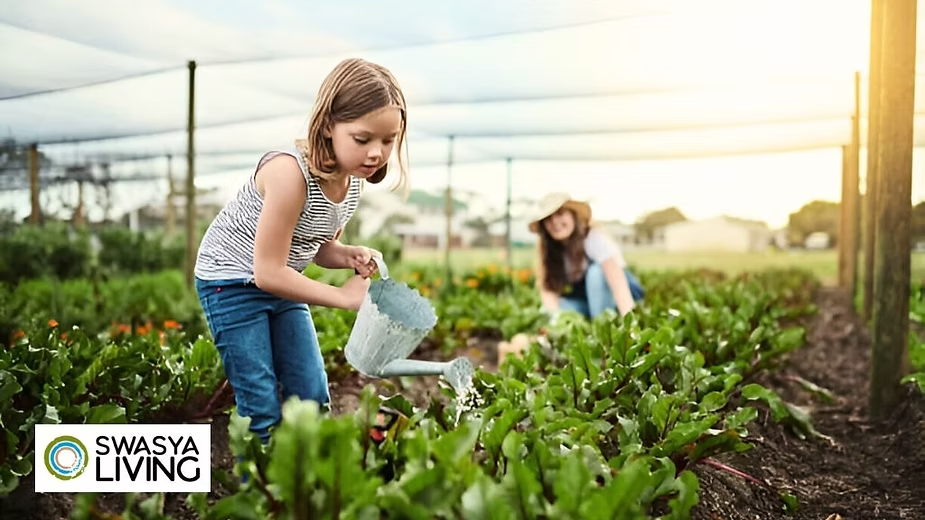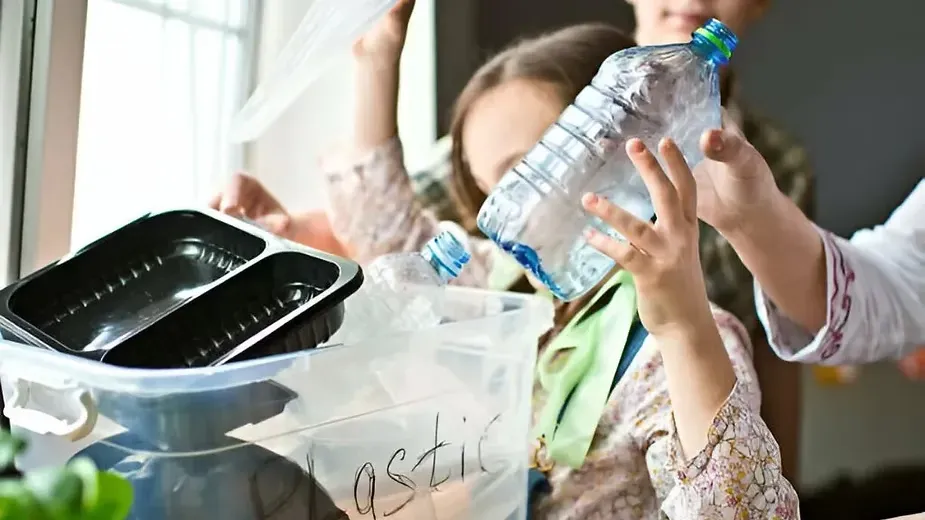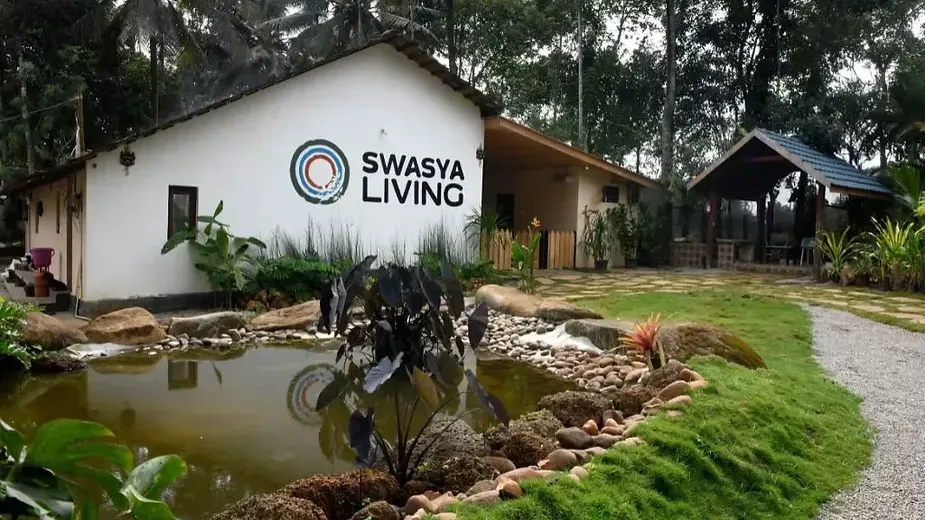A Sustainable Lifestyle: How to Live Eco-Friendly Every Day?
Published on July 25, 2025

The term "sustainable lifestyle" has recently become popular in environmentalism but many people do not fully understand its meaning. But what does it really mean? Is it just about swapping your plastic water bottle for a reusable one, or is there more to it than that? Spoiler alert: Sustainable living contains many actions that are easy to adopt in daily life.
We can simplify this information so that your grandmother who believes in cloud Wi-Fi blockers will follow the explanation clearly. A sustainable lifestyle goes beyond tree hugging and yurt living but you can still choose to do those things. You make sustainable choices to protect the earth and encourage people to live better for the environment. Sounds like a big responsibility, right? Don’t worry! Learn simple, actionable steps to help you adopt sustainable practices right now.
What is a Sustainable Lifestyle?
Let’s start with the basics. We practice sustainability when we fulfill today's requirements without reducing options for those who will live tomorrow. Our focus remains on adopting sustainable lifestyle or practices that both preserve our natural resources and lower waste output while supporting a healthy environment. Protecting the world we leave behind today involves creating sustainability benefits for both our children's future and all generations coming after.
We can live sustainably by selecting actions that help protect our planet and support our social systems. You don't need to be flawless, just care about what you do. Little sustainability steps you take daily such as energy conservation and fair product choices add up to transform our world for the better.
How to Live a Sustainable Lifestyle?
Okay, so we know the goal: Our aim is to reduce waste while achieving balance for a less threatening future ahead. But how do we actually make this happen in our everyday lives? Let's study straightforward methods to start living in a way that benefits our world's health.
1. Reduce, Reuse, Recycle (The Holy Trinity)
Everyone knows this phrase continues to matter for good reasons. We help protect landfills by limiting our purchases while reusing our existing items and recycling materials beyond use. A good rule of thumb? Before buying something new, ask yourself: “Do I really need this?” If the answer is no, then congratulations! You’ve just practiced sustainability.
You can reuse things in new ways beyond classic containers like Tupperware and jars. Our reuse efforts reach beyond daily items to include home furnishings and thought processes. You are familiar with the recycling process currently used. But did you know that recycling certain materials like e-waste or textiles can make a huge difference?
2. Mind Your Energy Consumption
Our energy habits are a main factor in determining how much carbon we release. Choose energy-wise equipment while adding LED lighting and make a habit of unplugging unused devices. Turning off the lights adds to your energy savings just like other simple changes do. It's like paying your electric bill with Monopoly money, totally avoidable!
You can reduce your energy impact further by installing solar panels or wind power technologies in your home. Taking small steps toward energy efficiency at home produces substantial beneficial results.
3. Eat More Plants, Less Meat
We’ve all seen the memes: “Save the planet, eat more plants!” Despite their corny nature these statements contain factual information. Meat production creates a major ecological impact throughout the food production chain. Switching to plant-based food choices helps both our environment and our water resources by decreasing emissions and conserving precious water supply.
But don’t panic! You don’t have to go full vegan overnight. Try one meal daily without meat or replace your meals with plant-based versions of your regular dishes. You can skip tofu without any restrictions because there are many appealing food options to choose from.
4. Opt for Sustainable Transportation
Cars feel like a friend who demands rides but refuses to be the driver. To live a sustainable life you need to think twice about driving your car since it helps save both your money and the planet. Try walking or cycling when you can and use public transport instead of driving your car. Buy an electric vehicle instead of keeping your traditional car – EVs let you live like in science fiction without flying cars.
Sharing rides through carpooling apps makes less vehicles drive on roads together. Getting around with roommates lets you build neighborhood connections while helping the environment through shared transportation.
Sustainable Lifestyle Tips for Beginners

Let’s be honest: Building sustainable lifestyle or habits needs both effort and patience to master this subject. Move forward with small steps while growing your comfort level with sustainable practices. Here are some beginner-friendly tips to get you started:
- Bring Your Own Bag (or Five): Say goodbye to single-use plastic bags. The everyday habit of using reusable bags leads to substantial plastic waste reduction when you continue doing this consistently.
- Buy Less, Choose Wisely: Be mindful of your purchases. Pick durable items instead of excessive consumptions because environmentally friendly choices matter more than cheap temporary alternatives.
- Compost Your Scraps: You don't need much space to start composting your leftover food waste which feeds and improves your soil. It's like a fancy version of recycling, who knew food scraps could be so trendy?
- Support Local Businesses: Buying products from nearby stores helps cut down on shipping emissions from faraway transportion. The local economy grows stronger by staying active in your neighborhood. Win-win!
- Avoid Fast Fashion: Lower-cost mass-produced garments lure us with their affordable price yet buying them wrecks our environment in significant ways. Shop at used clothing outlets and participate in clothing exchange events alongside purchasing expensive durable garments that stay valuable.
Equitable Use of Resources for a Sustainable Lifestyle
A sustainable world needs both individual action and equal opportunities for everyone to access essential resources. We must distribute necessary resources fairly today so all people can live well while keeping these resources available for next generations. Sustainable goals require workers to receive fair pay while everyone earns equal access to clean water and land.
We need to evaluate how sustainable actions will benefit ourselves and the people around us. We help farmers earn better wages when we purchase coffee and chocolate from fair trade suppliers. We create a fair and stable world by choosing businesses that value everyone and protect the environment.
Sustainable Lifestyle for Sustainable Development
The goal of sustainable development is to achieve positive change today without harming future generations' ability to meet their requirements. Our individual changes support regional growth while securing future resources for our children's needs.
Sustainable lifestyle development involves different elements beyond environmental preservation. Economic development should work for both our present needs while helping disadvantaged groups succeed in the future. Our fight should focus on pushing legislation that supports renewable energy adoption alongside social fairness and public resource availability.
Swasya living develops structured sustainability principles which unite personal welfare without harming the environment. Recent perspective guides people to consume mindfully thus they minimize waste while selecting tasteful sustainable materials. Personal health provides an alignment with organic foods alongside minimalist living as well as natural remedies.
The practice of resource conservation along with renewable energy choices combined with responsible activities such as recycling and reusing develops a natural linkage while practicing swasya living. The spiritual lifestyle based on traditional wisdom together with contemporary environmental practices creates a holistic system that produces environmentally healthy outcomes while maintaining sustainable approaches for future generations.
A Sustainable Lifestyle with Swasya Living

Swasya living develops structured sustainability principles which unite personal welfare without harming the environment. Recent perspective guides people to consume mindfully thus they minimize waste while selecting tasteful sustainable materials. Personal health provides an alignment with organic foods alongside minimalist living as well as natural remedies.
The practice of resource conservation along with renewable energy choices combined with responsible activities such as recycling and reusing develops a natural linkage while practicing swasya living. The spiritual lifestyle based on traditional wisdom together with contemporary environmental practices creates a holistic system that produces environmentally healthy outcomes while maintaining sustainable approaches for future generations.
Conclusion
Living sustainably isn’t as hard as it sounds. By selecting ways to save what we have while helping everyone succeed we create a more sustainable future. Even small steps play a vital role in achieving worldwide improvements when we work together.
You can follow the concept of sustainable lifestyle and practices without being an instant expert in environmentalism. Our journey to sustainability happens by moving forward with the right decisions. Start implementing basic sustainable practices in your life and you will find that these actions become habitual. Your positive choices in sustainable living can motivate others to follow your example.
